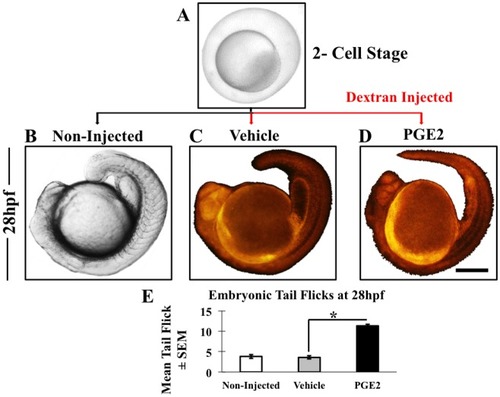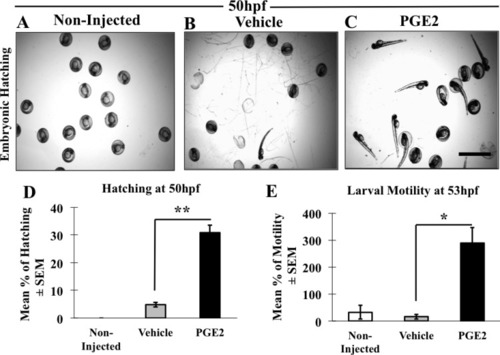- Title
-
Prostaglandin E2 promotes embryonic vascular development and maturation in zebrafish
- Authors
- Ugwuagbo, K.C., Maiti, S., Omar, A., Hunter, S., Nault, B., Northam, C., Majumder, M.
- Source
- Full text @ Biol. Open
|
|
|
|
|
|
|
|
|
|
|
We captured vascular development of hatched zebrafish embryos at different time points 53, 72 and 96hpf with a fluorescent microscope. A region of interest (ROI) for vascular maturation was shown with white dotted rectangle boxes. Vascular development for the vehicle at three-time points are presented in A, C, E and for PGE2 presented in B, D, F.
|






